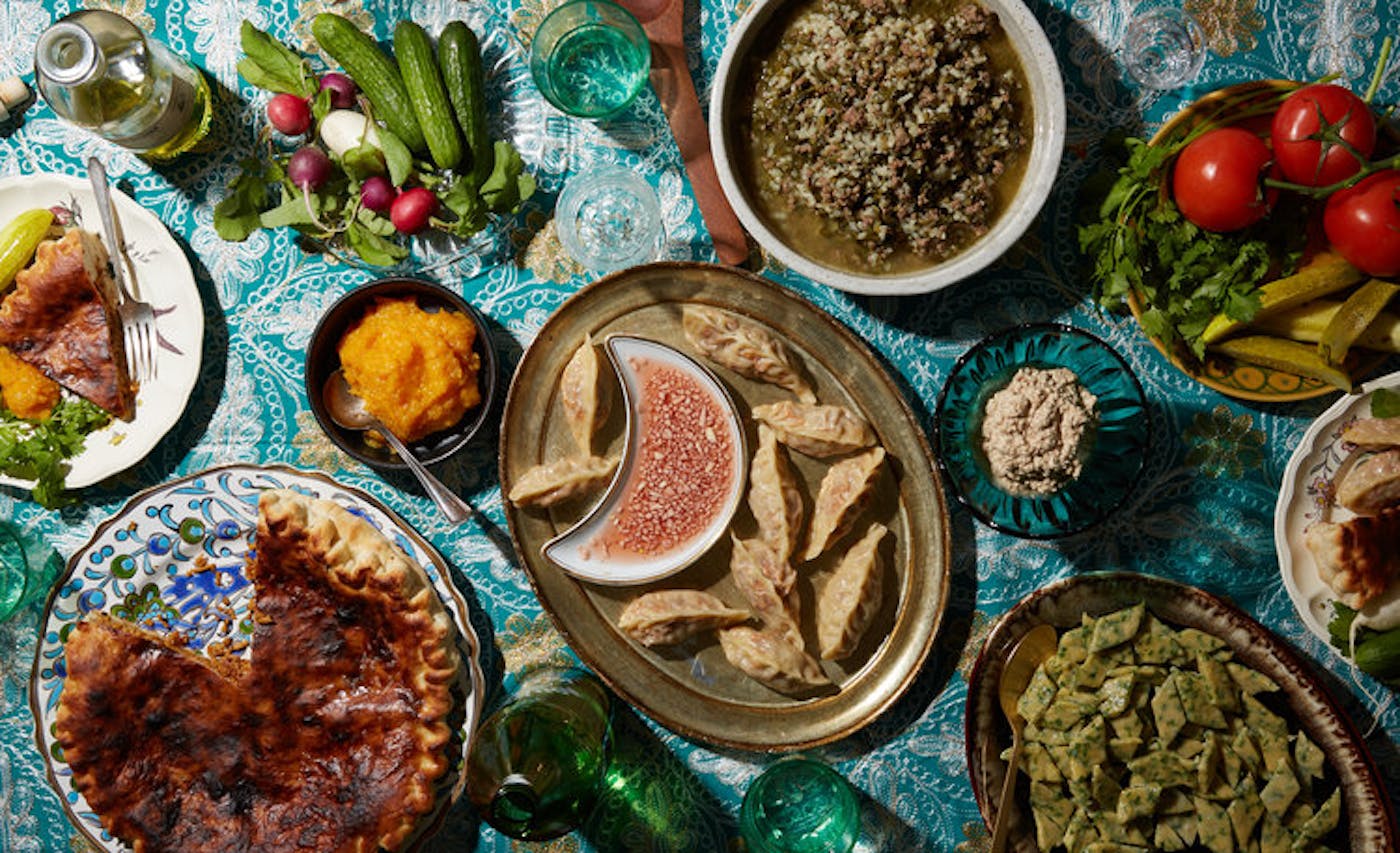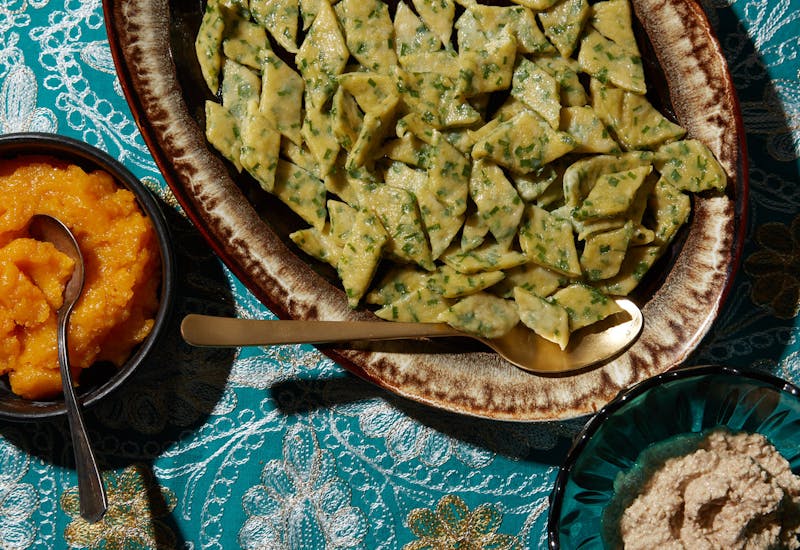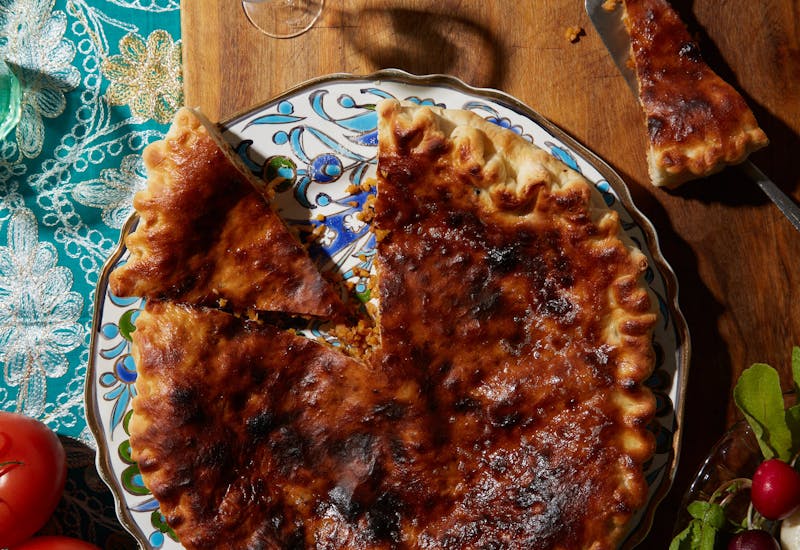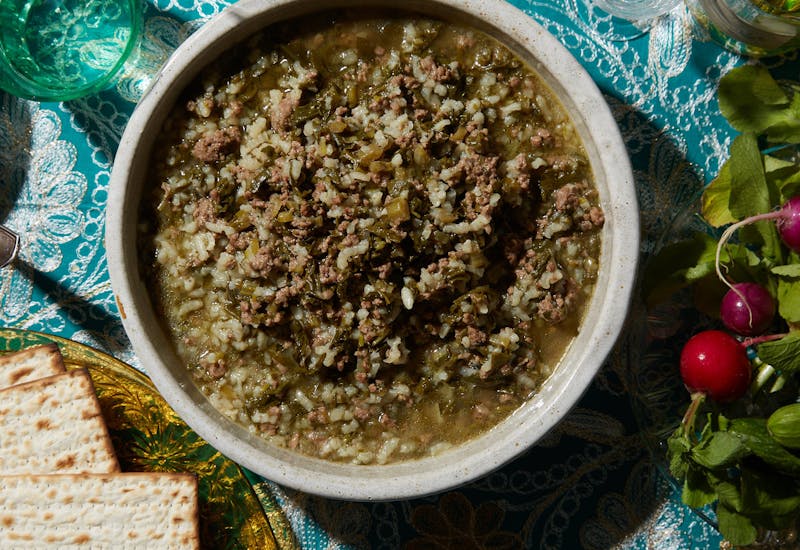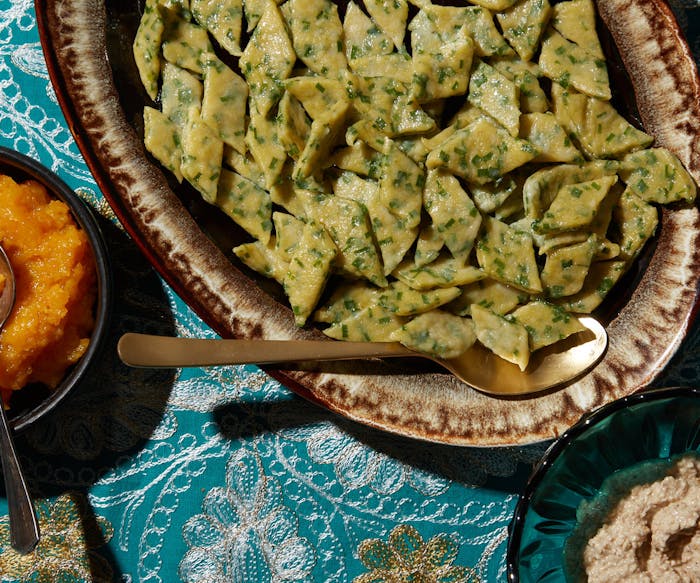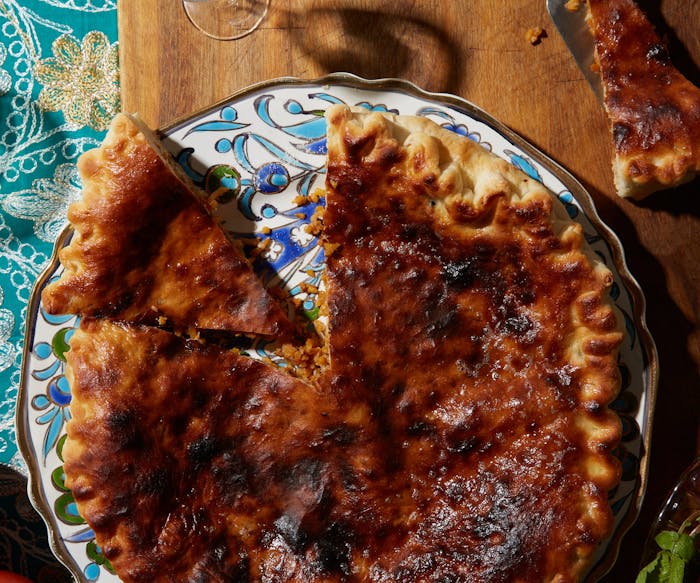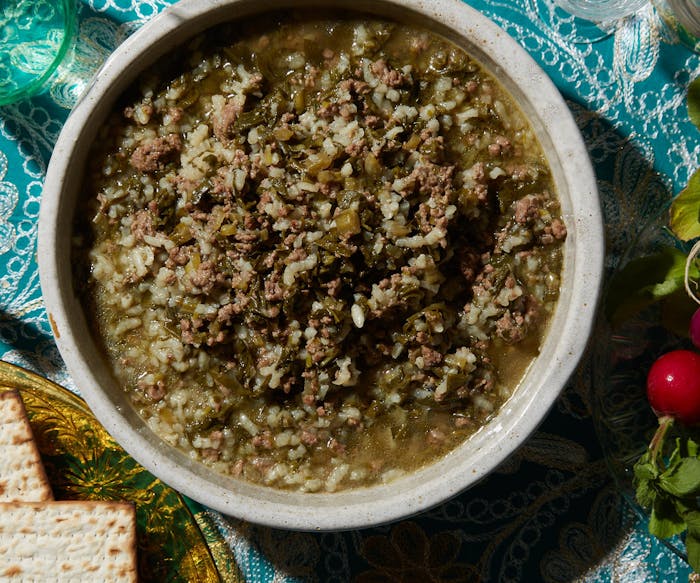Read more about Alona Eisenberg in “A Grandfather’s Kavkaz Soup Lives on in Israel” and try her recipe for tara (Kavkazi beef and chard soup).
In her Jerusalem home, Alona Eisenberg hosts dinners, serving dishes like tara, a soup of mallow leaves and ground beef and ingar poli, a fresh pasta that verges on gnocchi made with spring onion to curious diners. These recipes are rare, not only in Jerusalem but beyond its limits. They come from the Kavkazi Jewish community, sometimes referred to as Mountain Jews, who live in the Caucasus, between the Black and Caspian Seas.
Alona’s family lived as part of this community for generations, but in 1922, long before she was born, driven by Zionism, they planned to make Aliyah. They sold their belongings and property and traveled to Batumi, Georgia, where boats were leaving for Ottoman-ruled Palestine. But, when word reached of Ottomans drowning boats, the ship the family was on turned back. With nothing, they returned to Makhachkala, Dagestan to rebuild their lives.
Alona was raised in Dagestan by her grandfather Matitya after her mother died when she was six. By the time she was eight-years-old, Alona was cooking for herself, her sisters, and her grandfather. Learning to cook took time. The first time she made shakshuka, she burned it so thoroughly that “even the cats from my block didn’t want to eat it,” she jokes. By the age of 15, though, she had developed a full repertoire of recipes including complex dishes like dolma, or stuffed grape leaves, her grandfather taught her to make.
In 1996, her family again tried to make Aliyah, this time successfully. In her new home, she pursued a degree at an art institute, and found her way back to the kitchen in her late 20s. She started to blog about her life and interests. “After a couple of months, I understood it’s not just a blog, it’s become a food blog,” she says. She started to dig into the Kavkazian kitchen, looking for recipes and her identity. “It started a kind of burning in my bones,” she adds.
Her aunts didn’t understand her quest and weren’t eager to share their recipes, so she turned to the internet, asking other Kavkazi Jews about their recipes in private Facebook groups, realizing that most only knew of 20 to 30 recipes from their community. She went deeper, searching Russian websites, on Instagram, Chechnyan culinary blogs, and connecting with Muslim women from the region who prepare some of the same dishes.
“I collect knowledge about this cuisine from everyone who agrees to sit with me,” Alona says. She notes all of it in a spreadsheet, adding to her repertoire for her dinners and her blog. As she’s cooked her way through the Kavkazian recipes she’s uncovered, some bring her full circle. Two years ago, she found a recipe for ingar poli, the fresh, thick pasta made with spring onion that grows in the Caucasus. It took work and many rounds of testing, but she was able to recreate the version her mom made for her when she was little.
Everytime she works on her Kavkaz project, she says: “I understand this is wide and huge and I’m only at the beginning of the process.”
For a traditional Kavkazi Feast, prepare all of these dishes and serve them on an abundant table filled with pickles and salad.
